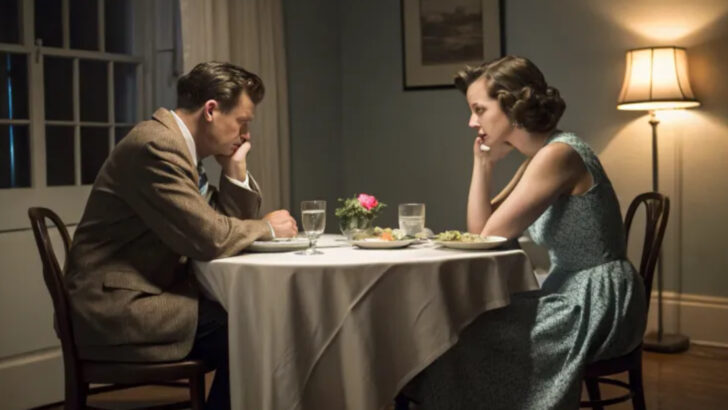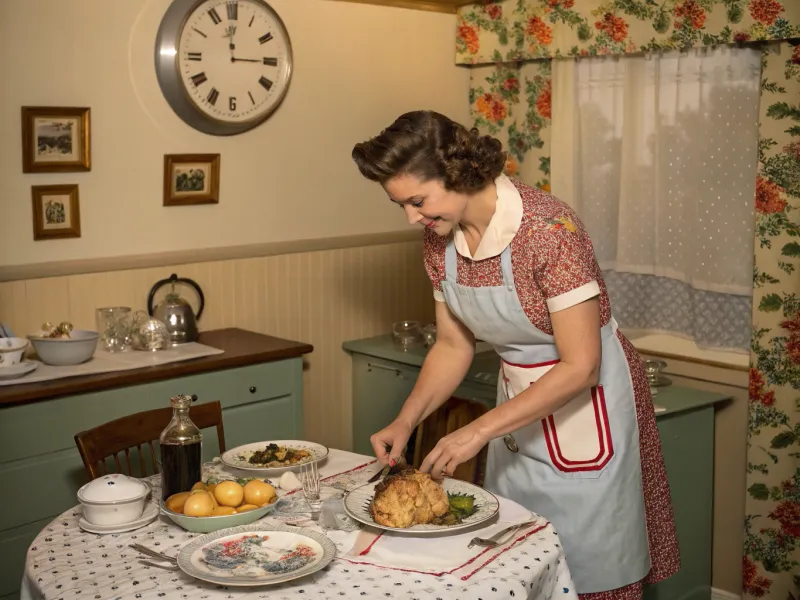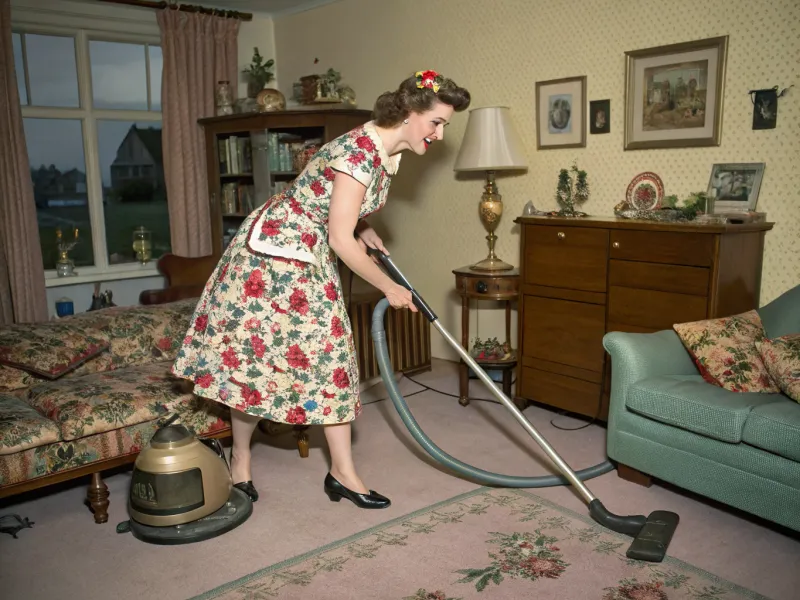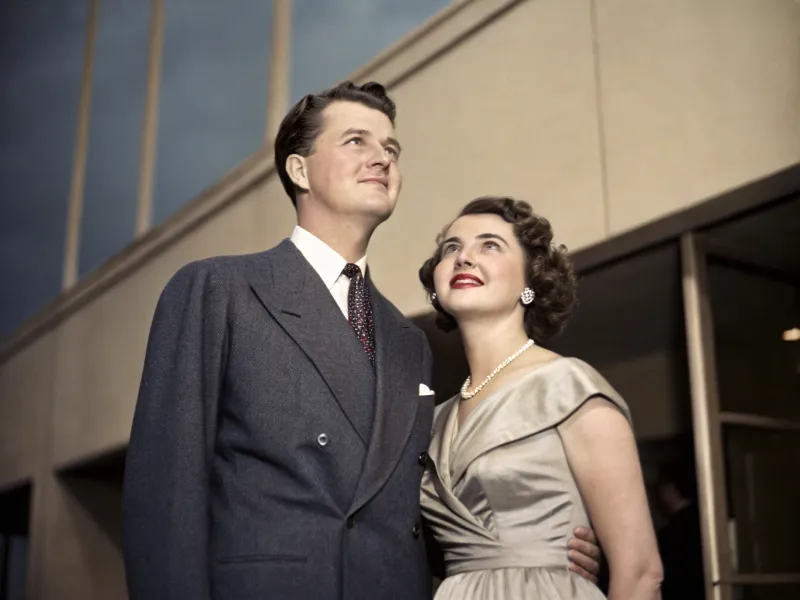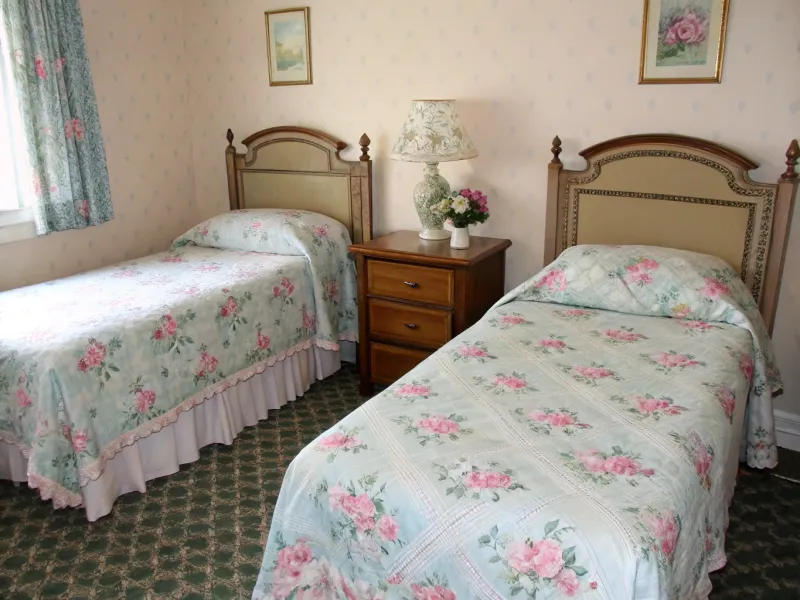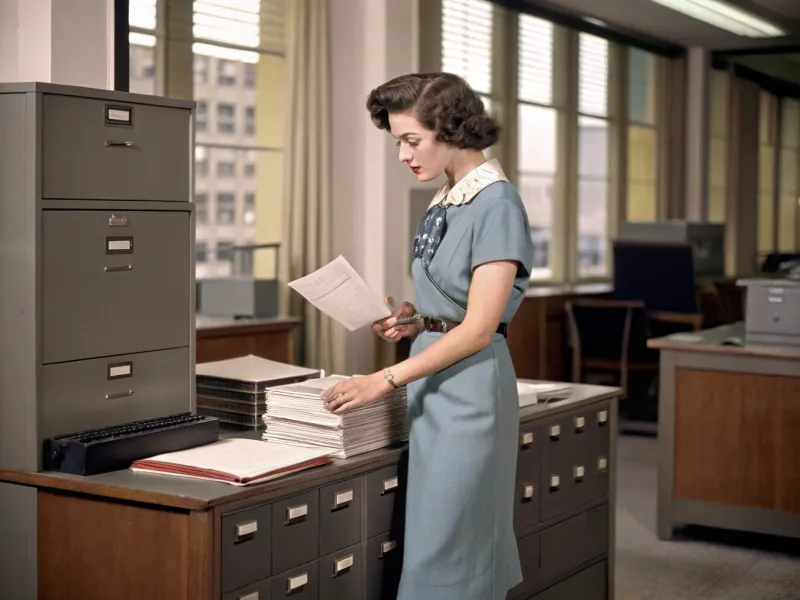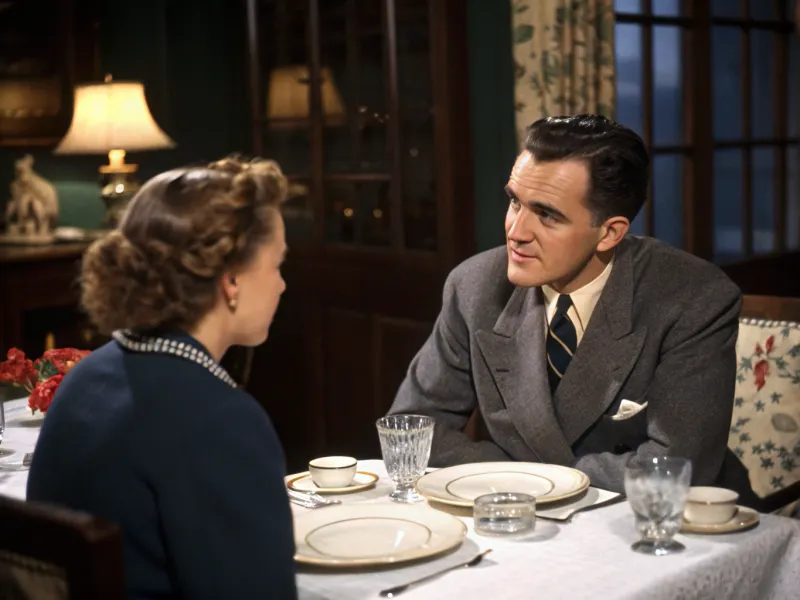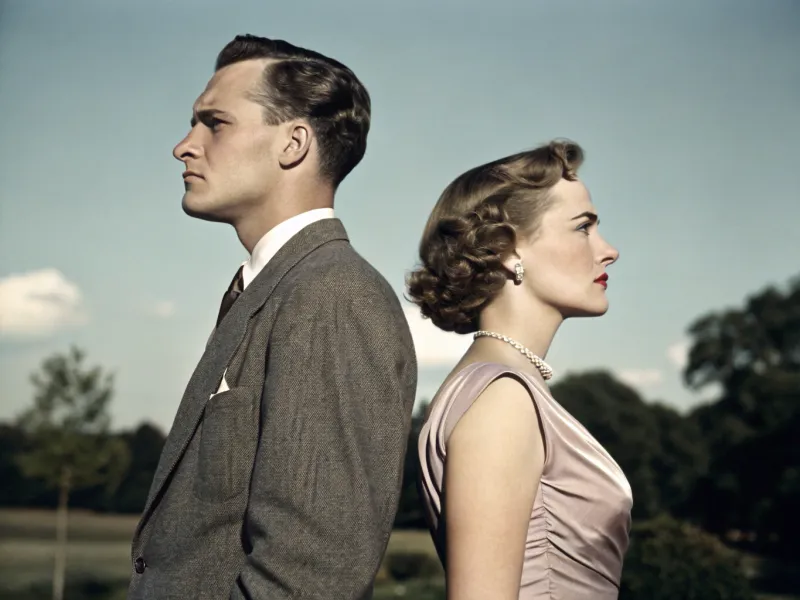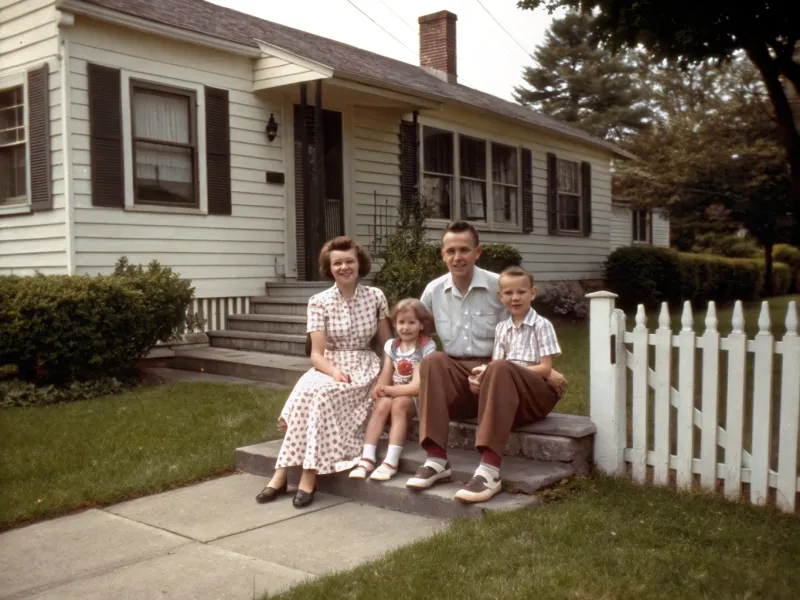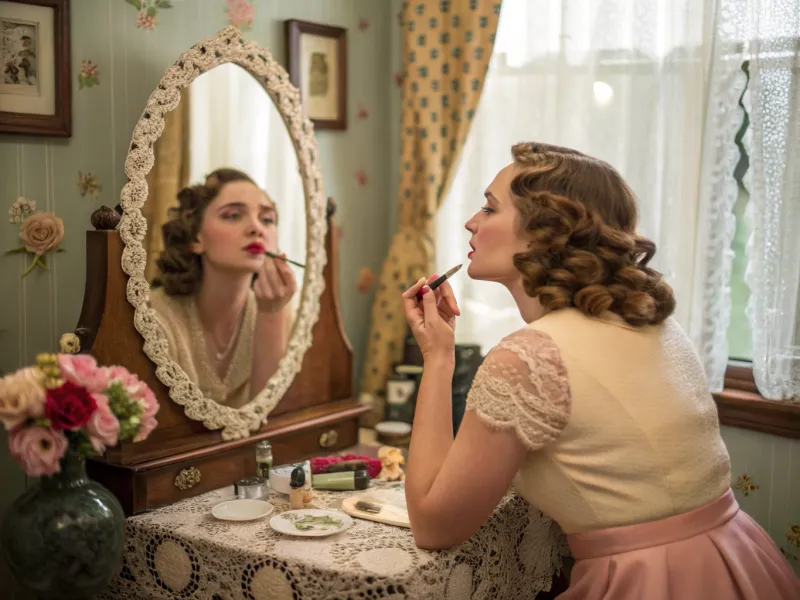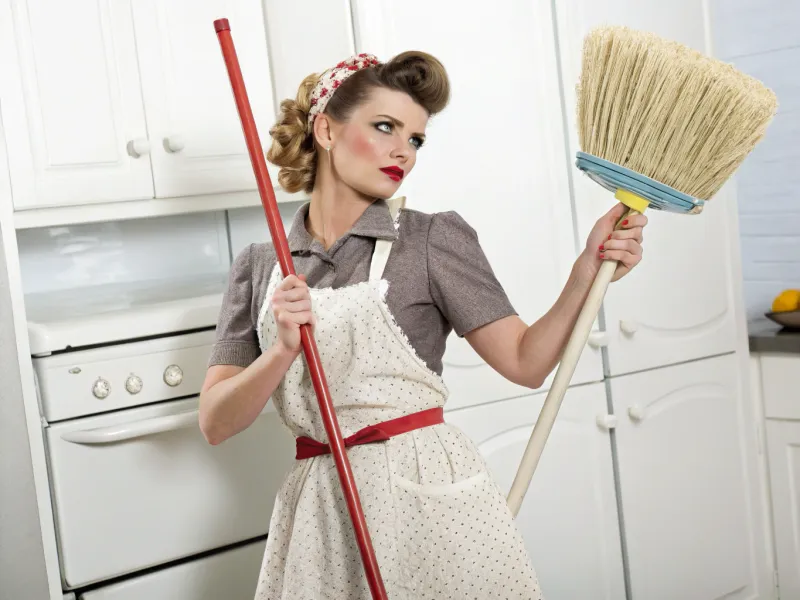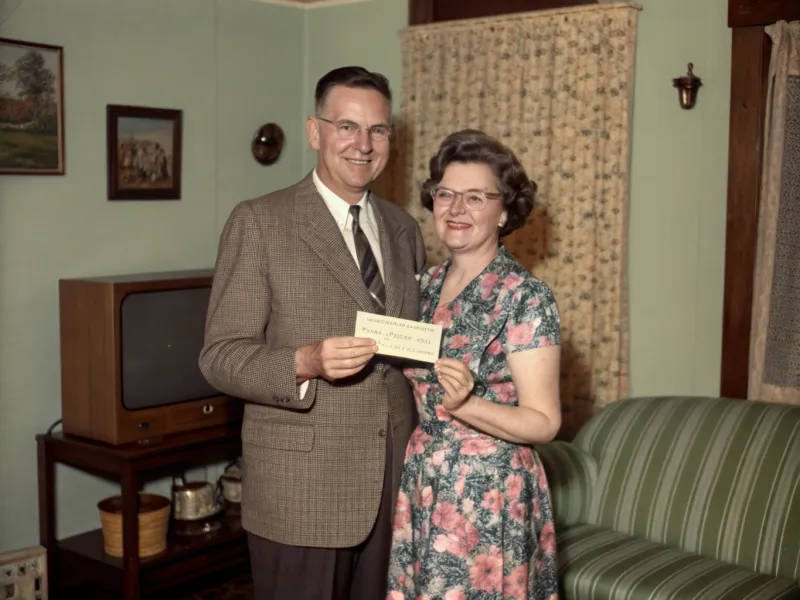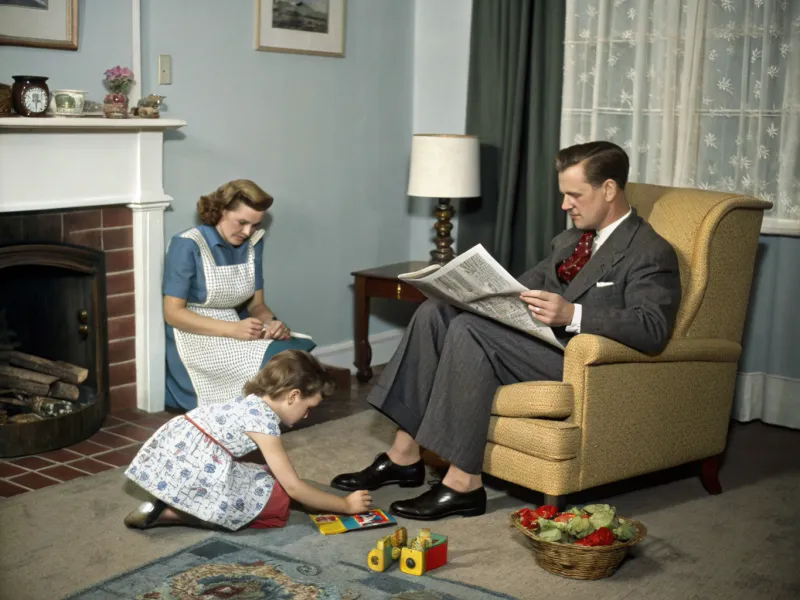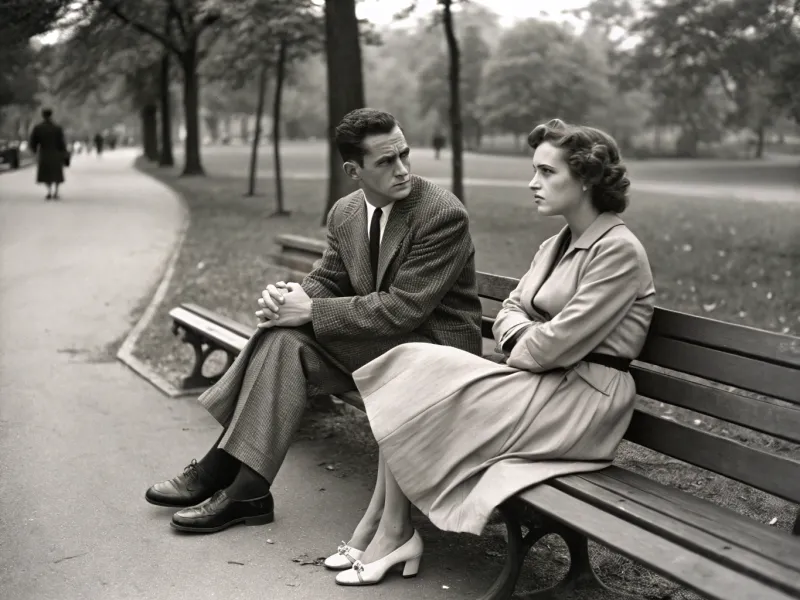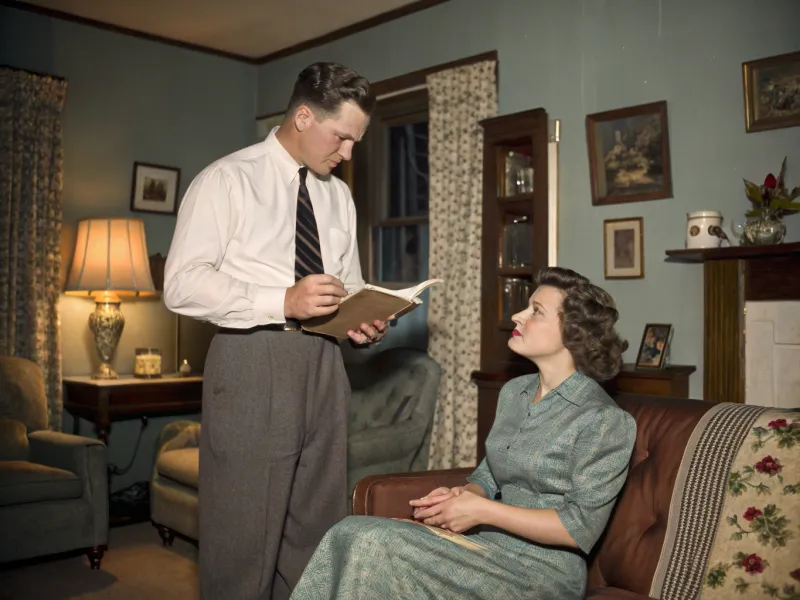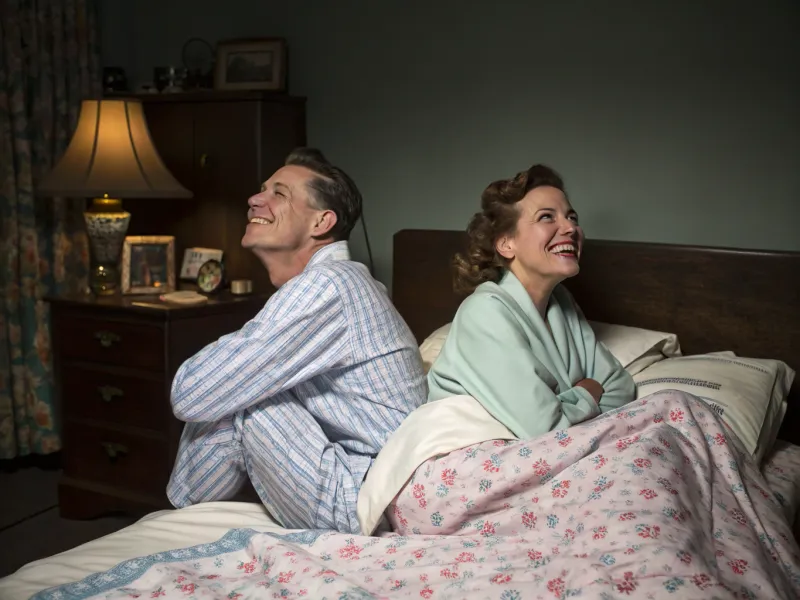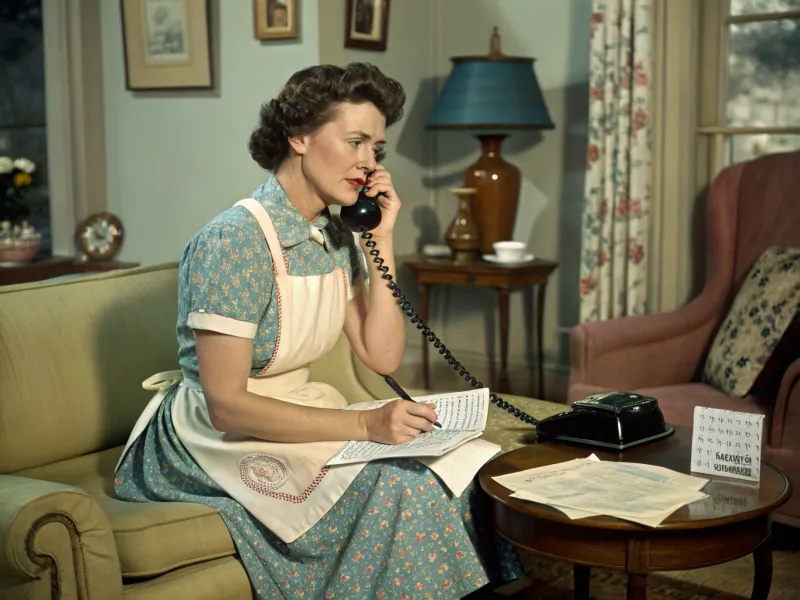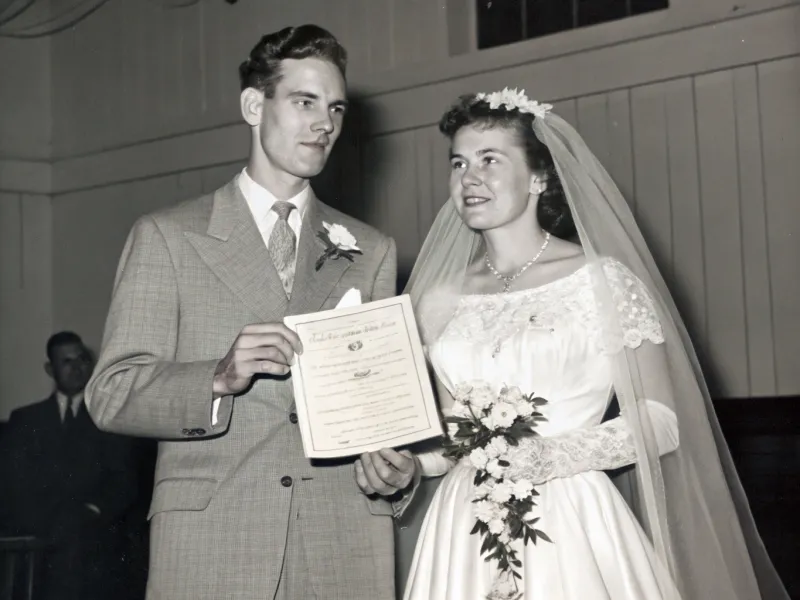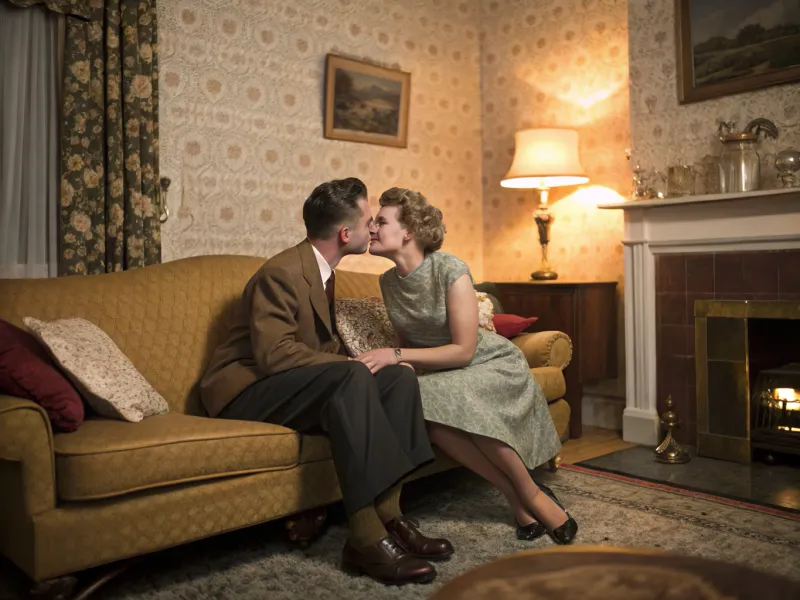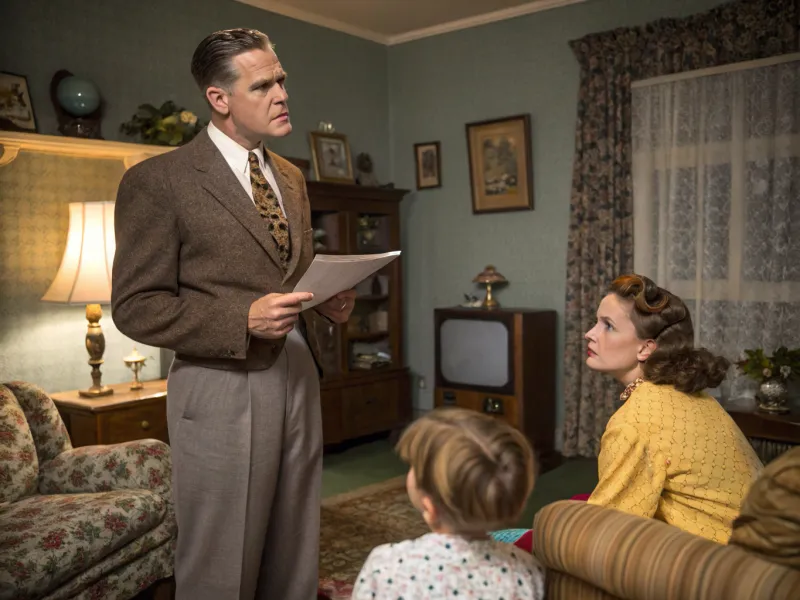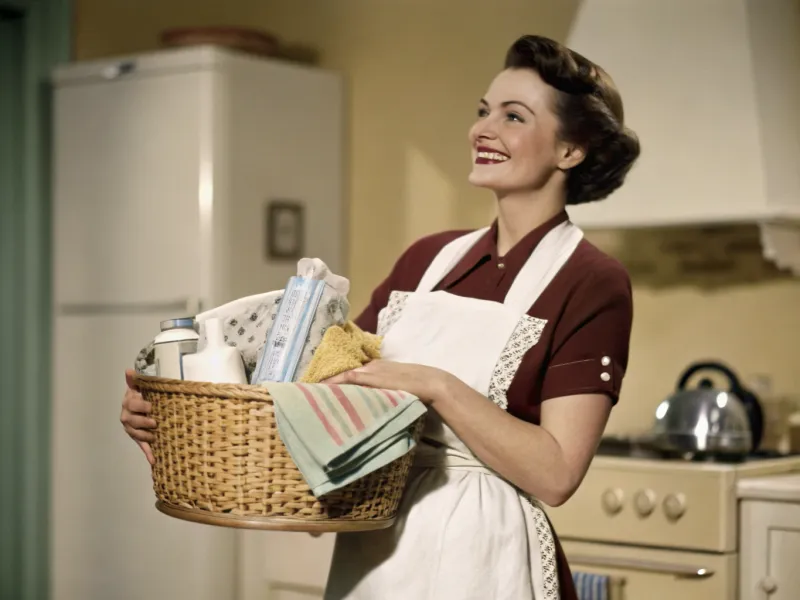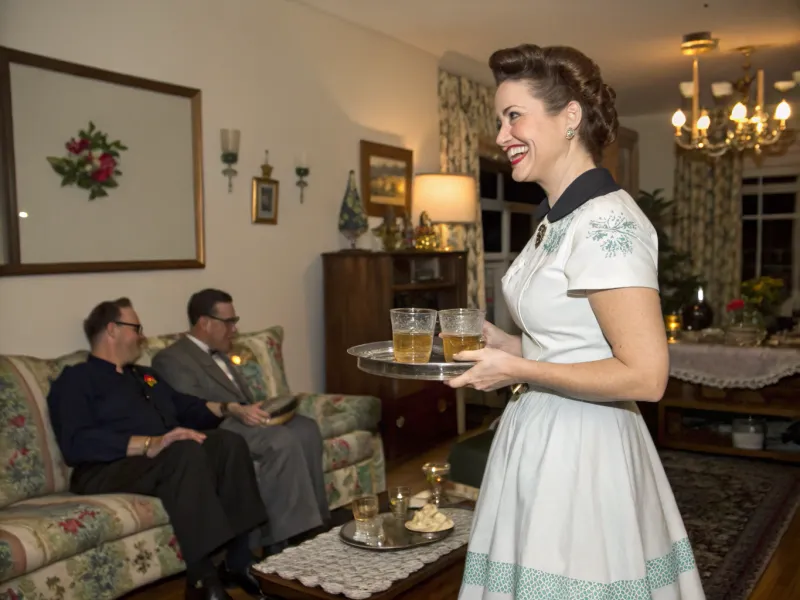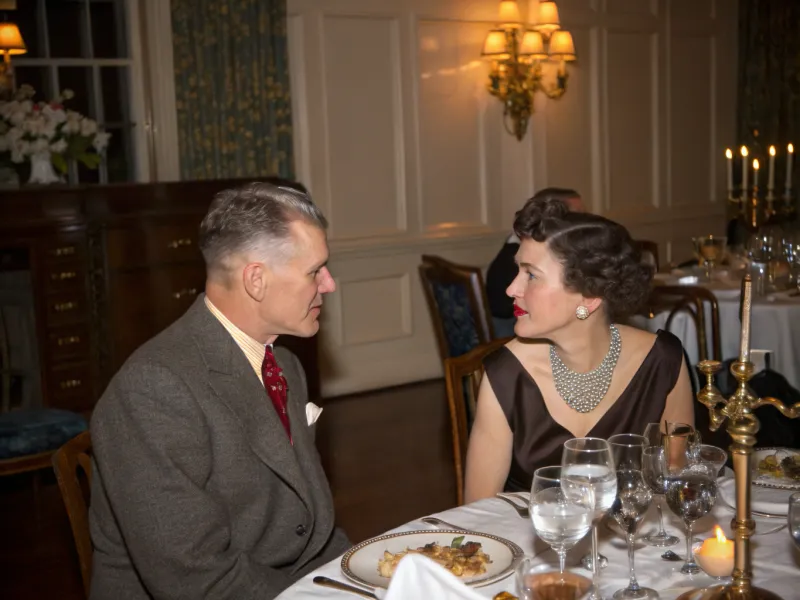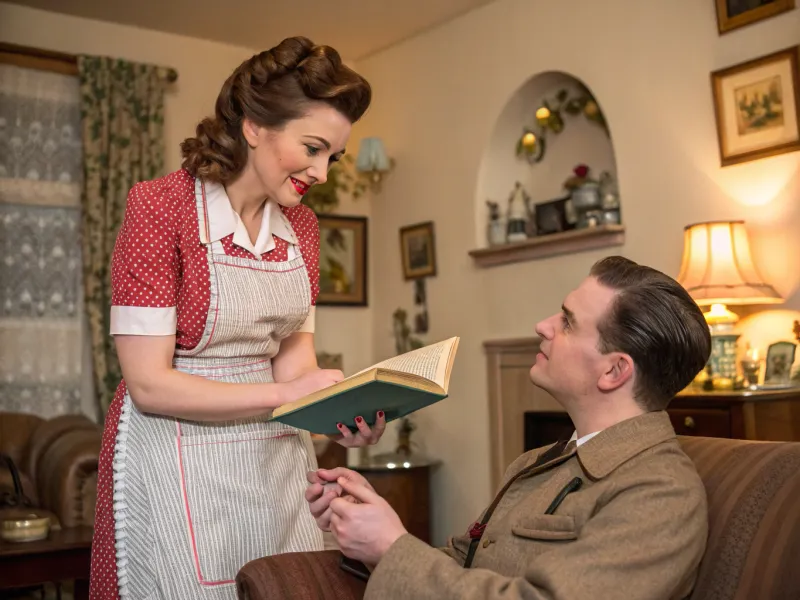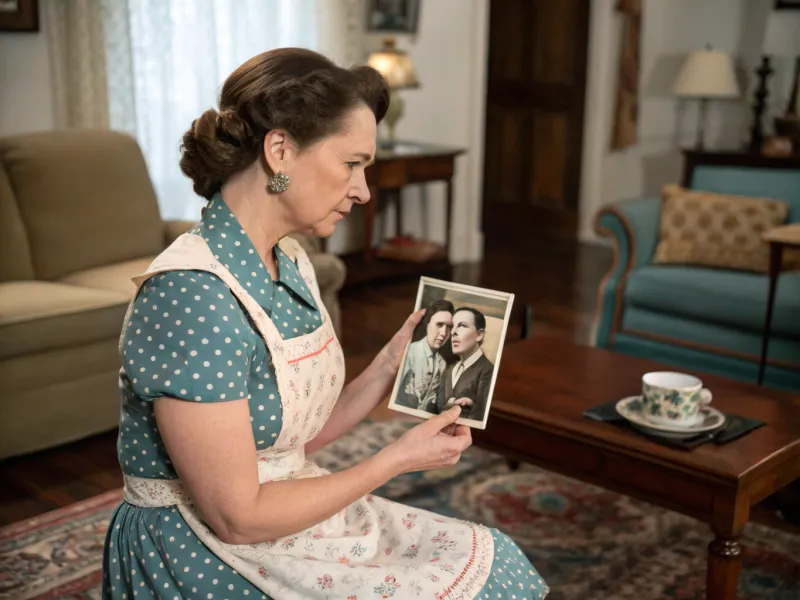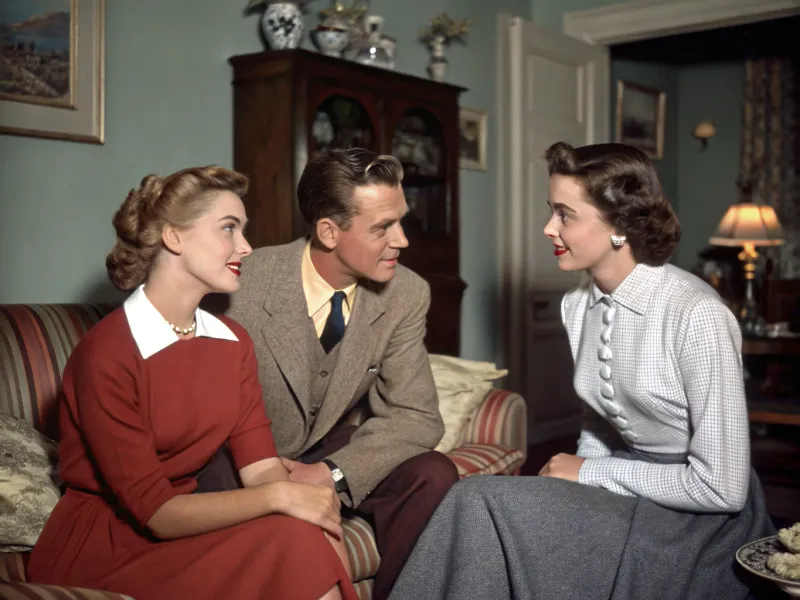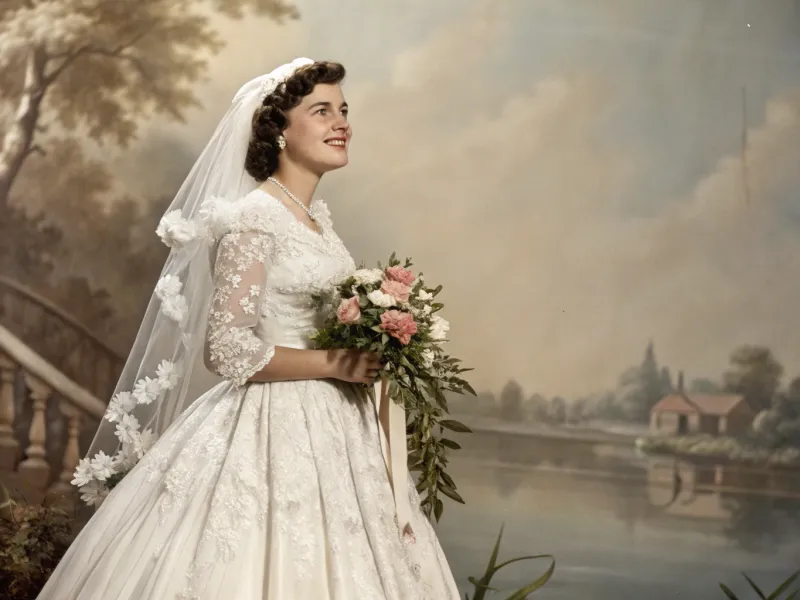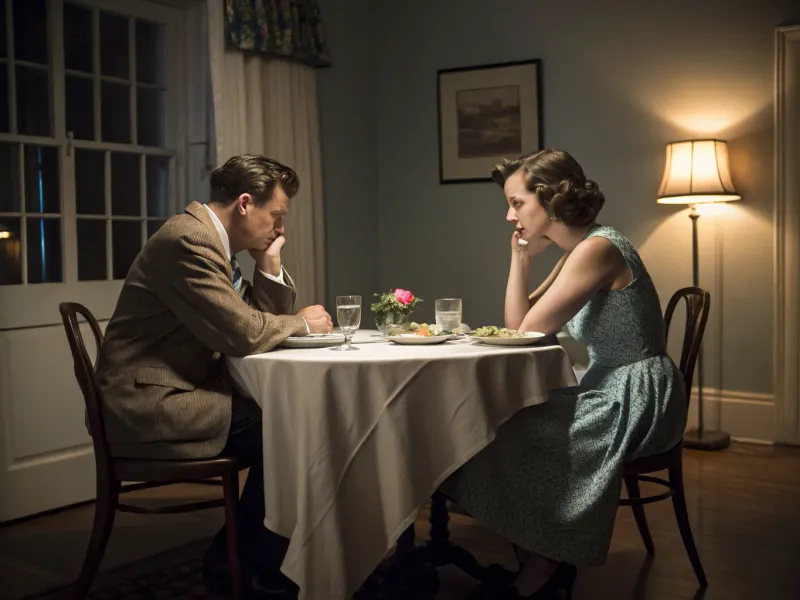Today we’ll have a good giggle over some of the wild and wacky ideas about marriage from the 1950s that just don’t hold up today. Imagine your grandma in a poodle skirt, nodding along to this advice like it was the gospel truth.
But don’t worry, we’re going to side-eye some of these gems together and breathe a sigh of relief that times have changed!
1. Dinner on the Table by 5 PM
Ladies, let’s kick things off with the notion that dinner must be served at precisely 5 PM. Apparently, back in the 1950s, the ultimate symbol of wifely devotion was a roast dinner waiting as soon as your husband walked through the door. Picture this: you’ve just wrangled the kids, cleaned the house until it sparkled, and somehow summoned the energy to prepare a three-course meal—all before the clock struck five.
In today’s whirlwind world, this idea feels more like a scene from a sitcom than reality. Who even gets home by 5 PM anymore? With traffic, work commitments, and the allure of take-out, the idea that dinner should be on the table by this specific time is a bit laughable.
Modern relationships thrive on partnership and flexibility. Whether it’s ordering in or cooking together post-commute, the focus is on what works for both partners. So, here’s to embracing spontaneity and saying goodbye to rigid timelines that belong in a time capsule, not our kitchens!
2. The Wife as a Full-Time Homemaker
Oh, o dream of being a 1950s full-time homemaker—if that was ever truly a universal dream! The idea was that a wife’s role was solely to tend the home and children, creating a perfect domestic haven. But let’s be real, this notion was more about societal expectations than individual choice.
Fast forward to today, and many women are balancing careers, families, and personal ambitions. The home is no longer just a woman’s domain, and thank goodness for that! Relationships now recognize that both partners can share responsibilities in the house, redefining what it means to be a homemaker.
While some may choose the path of homemaking, for others, the freedom to carve out a career is a cause for celebration. The beauty of modern marriage is that roles are fluid, and choice is king—or queen! So, let’s raise a toast to the variety of lifestyles that bring harmony and fulfillment, beyond the confines of a 1950s sitcom.
3. Marital Obedience
Ah, yes, the age-old idea of marital obedience—the one we probably associate with old black-and-white movies rather than real life. The concept was simple: the husband led, and the wife followed. Cue the eye rolls! This notion of obedience stemming from the idea of male dominance is as outdated as rotary phones.
In our modern era, marriages thrive on partnership and equality. It’s about listening to each other, valuing each other’s opinions, and making decisions together. Those words like “obedience” have no place in the language of love anymore.
Today, mutual respect and shared goals guide relationships. Love is a dance, not a march, and both partners get to lead. So, let’s step forward together, leaving behind the obedient wife trope in the annals of history, where it belongs!
4. The Husband as Sole Breadwinner
Remember when the man of the house was expected to be the sole breadwinner, setting out each day with a briefcase and a kiss on his wife’s cheek? This was seen as the ideal, where a man’s worth was tied to his ability to provide financially while the wife managed the home front.
Fast forward to now, and this notion feels as quaint as a black-and-white TV show. Dual-income families are now the norm, with both partners contributing financially and supporting each other’s careers. The rise of gender equality in the workplace has allowed men and women to redefine success and partnership in marriage.
So here’s to breaking the mold and celebrating shared responsibilities. Whether it’s joint bank accounts or shared career goals, today’s marriages are about teamwork and support, rather than antiquated financial hierarchies. The modern marriage thrives on balance and respect, allowing each partner to shine.
5. Separate Beds for Spouses
Separate beds? For married couples? It sounds like something straight out of an old TV sitcom, doesn’t it? Yet, in the 1950s, it wasn’t uncommon for spouses to sleep in twin beds, sometimes even in separate rooms. This idea was rooted in a sense of decorum and personal space, oddly suggesting closeness without the proximity.
Today, the thought of separate beds for couples is more likely to evoke chuckles than agreement. Modern couples often prioritize intimacy and connection, finding comfort in a shared bed. It’s not just about sleeping; it’s about nurturing closeness, even if that means dealing with a midnight snorer!
While some couples might choose their own space for a good night’s sleep, the norm is leaning towards sharing a bed. It’s a symbol of modern partnership, where closeness isn’t measured by how we sleep, but how we connect.
6. Women Shouldn’t Work After Marriage
Oh, the notion that a woman’s career must end at “I do.” Once upon a time, marriage was seen as the ultimate ‘promotion’ for women, and that promotion often came with a pink slip for whatever job they had. The idea was that a woman’s place was at home, managing everything domestic.
Today, this concept seems almost laughable. Marriage isn’t the end of a woman’s ambition or career, and modern couples often support each other’s professional journeys. The idea that a woman should quit her job after marriage is as outdated as dial-up internet.
Now, marriage is a partnership where both partners support each other’s dreams, whether they involve climbing the corporate ladder or nurturing a passion project. Let’s cherish the freedom to pursue our goals—wedding ring and all—because ambition doesn’t stop at the altar.
7. Men Make All the Big Decisions
Here we have the classic trope of the husband as the decision-maker, the one who held the final say in all things ‘important.’ This was a staple of the 1950s, where the wife’s role was to nod and agree while the husband decided everything from finances to family vacations.
Flash forward to now, and this notion feels like the plot of an old-fashioned drama. Today’s marriages thrive on collaboration, with both partners having a voice in decision-making. Whether it’s buying a house or planning a vacation, modern couples make choices together, valuing each other’s insights.
The era of unilateral decision-making is over. Relationships are built on mutual respect, where both voices matter. So here’s to shared decisions and celebrating the beauty of collaboration, where everyone gets a seat at the table—and an equal say in what’s for dinner!
8. Divorce is a Taboo Topic
Back in the day, saying the ‘D-word’ was almost as scandalous as admitting you watched TV in your pajamas. Divorce was seen as a failure, a taboo subject that was whispered about in hushed tones. It was less about personal happiness and more about maintaining appearances.
Today, while divorce isn’t exactly celebrated, it is recognized as a valid option when a marriage isn’t working. It’s a way to prioritize personal well-being and happiness, acknowledging that sometimes relationships don’t go as planned—and that’s okay.
Modern relationships understand that sometimes parting ways is the healthiest step forward. So, let’s break the silence and embrace open conversations about what makes us truly happy, because a marriage based on fear of divorce is no marriage at all.
9. Marriage is for Procreation
Once upon a time, the idea that marriage was primarily for procreation was as accepted as the notion that Elvis was the King. The narrative was that tying the knot naturally led to starting a family, with the proverbial picket fence and a swarm of offspring.
Fast forward to today, and marriage is celebrated for so much more than just creating baby booties. It’s about partnership, love, and building a life together—whether or not that includes children. Countless couples choose to marry with no intention of expanding their family tree beyond fur babies or houseplants.
The beauty of modern marriage is that it’s a personal journey, not a one-size-fits-all scenario. So, let’s celebrate love in all its forms and recognize that the choice to have children, or not, belongs to the couple alone. Because love doesn’t require a nursery to flourish!
10. The Wife Must Look Perfect Always
Ladies, ever been told to ‘put on a little lipstick’ before your husband gets home? In the 1950s, the expectation was that a wife would always look her best for her husband, as if she lived on a perpetual Hollywood set. This idea was less about personal expression and more about fulfilling a societal role.
Nowadays, this notion feels downright exhausting. Modern marriages thrive on authenticity and comfort, where both partners can be themselves—messy hair and all. The idea of maintaining a flawless appearance 24/7 is unrealistic and unnecessary.
In today’s world, love is about connecting with the real person, not just a polished exterior. So here’s to embracing the beauty of imperfection and knowing that true love sees beyond a perfect eyeliner flick or a well-coiffed hairdo!
11. Housework is a Woman’s Duty
Remember the old TV shows where the wife was always bustling around with a dust rag, making sure the house was spotless? The 1950s painted a picture where housework was seen as inherently feminine, with women shouldering the burden of all domestic chores.
Today, that image feels as dated as the commercials that suggested smoking was good for you. Modern marriages operate on teamwork, with both partners sharing the responsibilities of keeping a home. Whether it’s vacuuming, cooking, or folding laundry, it’s all hands on deck!
The shift towards shared housework reflects a broader understanding of equality and respect in relationships. So here’s to rolling up our sleeves together and making chores a shared adventure rather than a solo performance!
12. Wives Should Not Earn More Than Husbands
Oh, the scandal of a wife earning more than her husband! In the 1950s, this was seen as a disruption to the natural order, where the husband was supposed to be the primary breadwinner. The idea was wrapped up in notions of masculinity and societal roles.
Fast forward to today, and the income gap in marriages is seen through a completely different lens. Many couples celebrate the success of either partner without worrying about who earns more. The focus is on mutual support and shared goals.
The idea that a wife shouldn’t out-earn her husband has been tossed out with the black-and-white TVs. Modern relationships are built on support and respect, where financial dynamics are just one part of a much bigger picture. Here’s to celebrating success—no matter who brings home the bigger paycheck!
13. Men Don’t Do Emotional Labor
Back in the day, the emotional labor of maintaining a household was often the sole domain of women. This included everything from remembering birthdays to managing social calendars, seen as tasks that naturally fell to the wife. Meanwhile, husbands could focus on more ‘important’ things, like mowing the lawn.
In today’s world, this division seems downright archaic. Emotional labor is increasingly recognized as a shared responsibility, with both partners contributing to the emotional well-being of their relationship and family.
Modern marriages prioritize empathy, communication, and shared emotional responsibilities. It’s about both partners being emotionally present and supportive. So let’s ditch the old scripts and embrace a partnership where emotional labor is a team effort!
14. Public Displays of Affection Are Taboo
Remember when holding hands in public was as scandalous as sneaking a sip of your parents’ sherry? In the 1950s, public displays of affection (PDAs) were considered inappropriate, as public decorum bordered on the puritanical.
Flash forward to now, and lovebirds can be spotted everywhere, happily holding hands, sharing a quick smooch, or stealing a hug at every opportunity. PDAs have become a normal, accepted way of showing affection, breaking free from the constraints of yesteryear.
Today’s couples celebrate their love openly, without fear of side-eye from strangers. Here’s to expressing affection in whatever way feels right, whether it’s a cheeky kiss on the subway or a cozy cuddle at a café!
15. Husbands Know Best
And they say husbands know best! This idea was a staple in the 1950s, where the husband’s word was often seen as the final say in household and life matters. It was an era when phrases like “Father knows best” were taken seriously, reflecting societal norms that placed men in positions of unquestioned authority.
In today’s enlightened age, the ‘hubby knows best’ trope has lost its sheen. Modern marriages celebrate equality and shared decision-making, where both partners’ opinions are valued and respected.
The shift towards equal partnerships reflects a broader understanding of mutual respect and co-leadership in relationships. So here’s to leaving behind outdated notions of authority and embracing a partnership where both voices are heard and valued equally!
16. Never Go to Bed Angry
Ah, the age-old advice that couples should never go to bed angry—like a magic spell that would somehow fix all problems before sunrise. This notion was rooted in the idea that unresolved conflicts would fester overnight, leading to bigger issues.
Today, we know that sometimes it’s okay to sleep on it. Taking a break can provide perspective, allowing couples to approach conflicts with a clearer mind and open heart. The idea isn’t to ignore issues, but to tackle them when both are ready.
Modern relationships focus on healthy communication and emotional maturity, understanding that conflicts aren’t resolved by the ticking clock but by mutual respect and understanding. So let’s toast to getting some beauty sleep and tackling challenges with a fresh perspective!
17. The Wife is the Family’s Social Secretary
Once upon a time, the wife was expected to be the family’s social secretary, juggling invitations, organizing playdates, and ensuring the social calendar was up to date. This role was part of the broader expectation that women managed all things social and domestic.
In today’s world, this expectation feels as outdated as rotary phones. Modern couples share the responsibilities of managing social engagements, recognizing the importance of teamwork in keeping life running smoothly.
The shift towards shared social responsibilities reflects a broader understanding of equality and partnership in marriage. Here’s to modern relationships where both partners contribute to the family’s social life, making collaboration the new norm!
18. Marriage is Forever—No Matter What
In the 1950s, the idea that marriage was forever, no matter the circumstances, was ingrained in societal norms. Divorce was a last resort, and staying together was seen as a duty, regardless of personal happiness or growth.
Today, the concept of marriage has evolved to prioritize personal well-being and mutual growth. While many marriages do last a lifetime, the understanding that relationships can change and sometimes end is acknowledged as part of life’s journey.
Modern relationships focus on mutual support and happiness, recognizing that sometimes paths diverge. So let’s celebrate love in all its forms and understand that commitment is about quality, not just longevity!
19. Keep Problems Private
Back in the day, airing your dirty laundry was considered a major faux pas. Marriage problems were kept behind closed doors, with couples encouraged to maintain a façade of perfection, even if things weren’t rosy.
Today, the taboo against sharing marriage struggles is being dismantled. Open communication with friends, family, or therapists is increasingly recognized as valuable, providing support and perspective.
Modern relationships understand that seeking help and sharing experiences is a strength, not a weakness. Let’s embrace the power of community and support, knowing that we’re not alone in our challenges!
20. The Perfect Wife is Silent and Sweet
The perfect wife of the 1950s was expected to be silent and sweet, embodying the demure, gentle persona that wouldn’t dare ruffle feathers. It was an era when a woman’s voice was often stifled in favor of maintaining peace and appearances.
Today, the notion of a silent wife belongs in the past. Modern marriages celebrate strong, vocal women who express their thoughts and feelings. Marriage is a partnership where both voices matter, and silence isn’t golden.
Let’s cherish the beauty of open expression, where modern relationships thrive on communication and mutual respect. Silence is no longer a virtue, and that’s something to celebrate!
21. The Husband is the Disciplinarian
In the 1950s, the husband was often viewed as the disciplinarian of the family, laying down the law while the wife nurtured and soothed. This dynamic reflected the broader societal roles of men as authority figures within the home.
Today, parenting dynamics have shifted towards shared responsibilities in discipline and nurturing. Both parents participate in guiding and supporting their children, recognizing the importance of balance and collaboration.
Modern relationships focus on teamwork in parenting, understanding that both partners bring valuable perspectives. Here’s to shared roles and equal involvement in raising the next generation!
22. Wives Should Be Grateful for What They Have
Ladies, ever been told you should be grateful for what you have, no matter how modest? In the 1950s, wives were often expected to be content with their lot, focusing on what they had rather than what they might aspire to.
Today, this notion feels limiting and outdated. Modern marriages recognize the value of ambition and growth, encouraging partners to dream big and pursue their goals, together and individually.
The idea that gratitude should limit ambition has no place in today’s relationships. Here’s to celebrating aspirations and supporting each other in achieving dreams, because gratitude and ambition can coexist beautifully!
23. The Wife as a Hostess, Not a Partner
In the 1950s, the role of a wife often extended to being the perfect hostess, ensuring that social gatherings ran smoothly while her husband entertained guests. This expectation framed women as supporters rather than equal partners in social settings.
Today, the idea of the wife as merely a hostess has been left in the past. Modern marriages celebrate equality and partnership, with both partners engaging equally in social and personal interactions.
Let’s toast to relationships where both partners are valued as individuals and equals, beyond roles of host or hostess. Here’s to partnerships where everyone has a seat at the table!
24. Always Agree with the Husband in Public
The idea that a wife should always agree with her husband in public was a classic 1950s trope. Maintaining harmony and avoiding public disagreements was seen as essential to a happy marriage, even if it meant stifling personal opinions.
Today, this notion feels as outdated as the fashion trends of the era. Modern relationships thrive on authenticity and respect, where both partners are free to express their opinions openly, even in public settings.
Let’s celebrate the beauty of honest communication and mutual respect, where agreeing to disagree is perfectly acceptable. Here’s to relationships where authenticity reigns supreme, both privately and publicly!
25. The Wife Should Always Be Available
Ever heard the saying that a wife should always be available to meet her husband’s needs? This idea was prevalent in the 1950s, framing women as ever-ready to serve, regardless of their personal desires or needs.
Today, the idea of constant availability feels restrictive and outdated. Modern marriages recognize the importance of personal space and self-care, understanding that both partners have needs and desires outside of the relationship.
Let’s celebrate the evolution of marriage into a partnership that values personal time and individuality. Here’s to relationships where both partners support each other’s independence and growth!
26. Marriage is the Woman’s Responsibility
Back in the day, the success of a marriage was often seen as the woman’s responsibility. She was expected to maintain harmony, manage the household, and ensure everything ran smoothly, while the husband focused on providing.
Today, this notion feels as outdated as black-and-white televisions. Modern relationships thrive on shared responsibility, where both partners contribute to the success of the marriage in their unique ways.
Let’s toast to relationships that are built on teamwork and mutual respect, where responsibility is shared and celebrated. Here’s to partnerships that are equal and fulfilling, beyond traditional roles!
27. No Friends of the Opposite Gender
In the 1950s, the idea that married individuals should avoid friendships with the opposite gender was prevalent. This notion was rooted in a fear of temptation and the belief that such friendships could threaten marital harmony.
Today, this idea feels restrictive and unnecessary. Modern relationships are built on trust and respect, recognizing that friendships with people of any gender can enrich our lives and support our personal growth.
Let’s celebrate the freedom to form meaningful connections and friendships, beyond outdated notions of gender roles. Here’s to trusting and supportive relationships where personal growth is encouraged and celebrated!
28. Women Need to Marry Young
Once upon a time, the pressure for women to marry young was as intense as the fear of missing out on the latest Elvis record. The notion was that a woman’s value was tied to her ability to snag a husband while still young and vibrant.
Today, this idea feels outdated and limiting. Modern society recognizes that there is no ideal age for marriage, and that personal growth and readiness are far more important than ticking a societal box.
Let’s embrace the freedom to marry—or not—when the time feels right, without societal pressure. Here’s to celebrating love and commitment at any age, because the heart knows no timeline!
29. Keep Politics Out of Marriage
Back in the day, discussing politics within a marriage was often seen as a recipe for disaster. The advice was to keep such topics at bay to maintain peace and harmony, avoiding any potential for disagreement or conflict.
Today, this notion feels limiting and unrealistic. Modern marriages recognize the importance of discussing important topics like politics, understanding that such conversations can strengthen the relationship through shared values and respectful debate.
Let’s celebrate the power of open dialogue and mutual respect in relationships, where discussing politics isn’t off-limits but encouraged as a way to grow and connect. Here’s to relationships that thrive on shared understanding and open communication!

